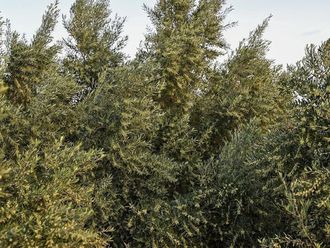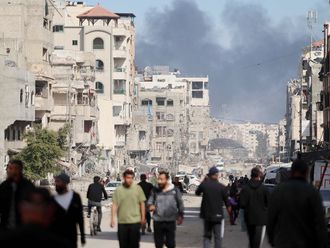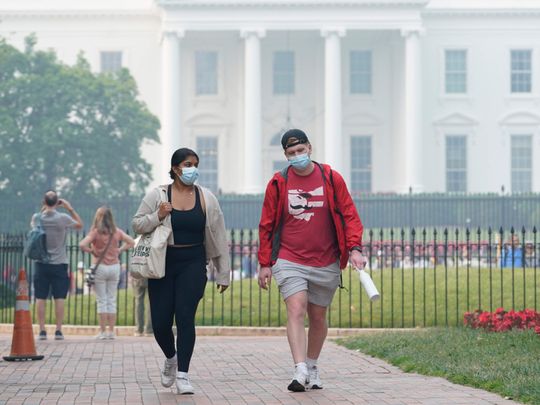
Washington: The worst Canadian wildfire season in recorded history spread an orange haze from Massachusetts to South Carolina and as far west as Missouri, threatening to disrupt flights and forcing millions to mask up or stay inside.
Philadelphia and Baltimore registered some of the worst air quality readings in the US with the level exceeding 300 on Thursday, a number considered hazardous, according to the Environmental Protection Agency’s AirNow map. Manhattan recorded in the 200 range “- but New York’s Mayor Eric Adams warned the unprecedented conditions could again deteriorate and urged people to take precautions.
Washington, DC, was under a “Code Purple” air quality alert, indicating “very unhealthy air conditions for the entire public,” according to the office of Mayor Muriel Bowser.
“Based again on the forecast that the National Weather Service is putting out, we could see the winds that are pushing the smoke south from Canada begin to shift,” said Christopher Rodriguez, director of DC’s Homeland Security and Emergency Management Agency. “So that will ease again some of the air quality challenges that we’re facing into the weekend.”
Flight delays
New York City area airports including LaGuardia and Newark are facing ground delays for a second day due to low visibility. The delays could create a ripple impact on US flights as lots of air traffic flows through New York and the Northeast.
Inbound flights to New York’s LaGuardia Airport were delayed for a second day due to low visibility, while the Federal Aviation Administration warned that flights could also be halted at JFK, Newark and Teterboro.
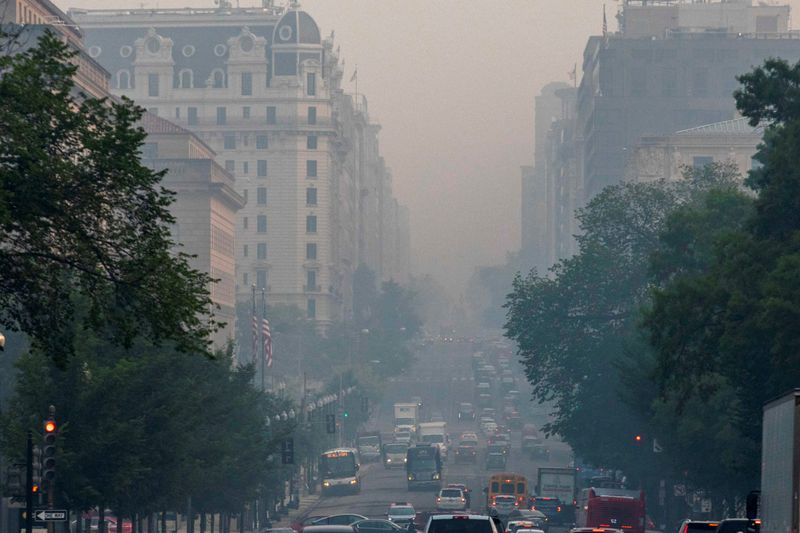
The haze is expected to last into Monday or Tuesday before the larger weather pattern pumping smoke south from Canada starts to break up, according to Zack Taylor, a senior branch forecaster with the US Weather Prediction Center. The plume itself covers most of North America and in the long term, the only real solution will be if the fires in Canada are brought under control.
For now, dystopian scenes gripped those in cities unfamiliar with this type of pollution, which is far more prevalent in Asia and increasingly affects parts of North America. Historic wildfires have blanketed large parts of Northern California in smoke in recent years and turned San Francisco’s skies orange in 2020.
Canada leading world
Canada is leading the world right now in the number of powerful blazes over the past 24 hours, data from NASA satellites show, with more than 400 forest fires active across the country and many of them raging out of control. Prime Minister Justin Trudeau blamed climate change for exacerbating the problem and said that hundreds of US firefighters have arrived in Canada.
President Joe Biden offered additional support to fight the blazes and New York state was distributing a million N95 masks on Thursday as officials across the region urged residents to stay inside.
New York and the Northeast should get ready for more smoke through September as long as fires continue to burn across Quebec and eastern Canada, said Mark Wysocki, New York state’s climatologist and a lecturer at Cornell University.
“The potential is there not only for this summer but going right into the fall,” he said. “We are going to have to adapt to this.”
Here’s a closer look at what’s happening
Smoke from Canada’s wildfires has been moving into the United States since last month. The most recent fires near Quebec have been burning for at least several days.
The big driver was prolonged hot, dry weather.
“The month of May was just off the charts — record warm in much of Canada,” said Eric James, a modeling expert with Cooperative Institute for Research in Environmental Science at the University of Colorado who is also with the National Oceanic and Atmospheric Administration.
Those unusual conditions — the type that climate change is making worse — increased the risk of fires, he said.
The Quebec-area fires are big and relatively close, about 500 to 600 miles (roughly 800 to 970 kilometers) from Rhode Island and they followed wildfires in Nova Scotia.
WHY IS SMOKE REACHING SO FAR AWAY?
Strong winds high up in the atmosphere can transport smoke long distances and it’s common for large, violent fires to create unhealthy conditions hundreds of miles away from where forests are burning.
The right mix of circumstances had to align for the smoke to blanket major US cities: A dry, hot spring set the stage for big fires. Then weather did the rest, said Bob Henson, meteorologist with Yale Climate Change Connections.
“It’s a simple matter of trajectory,” Henson said. “The smoke goes where the wind takes it.”
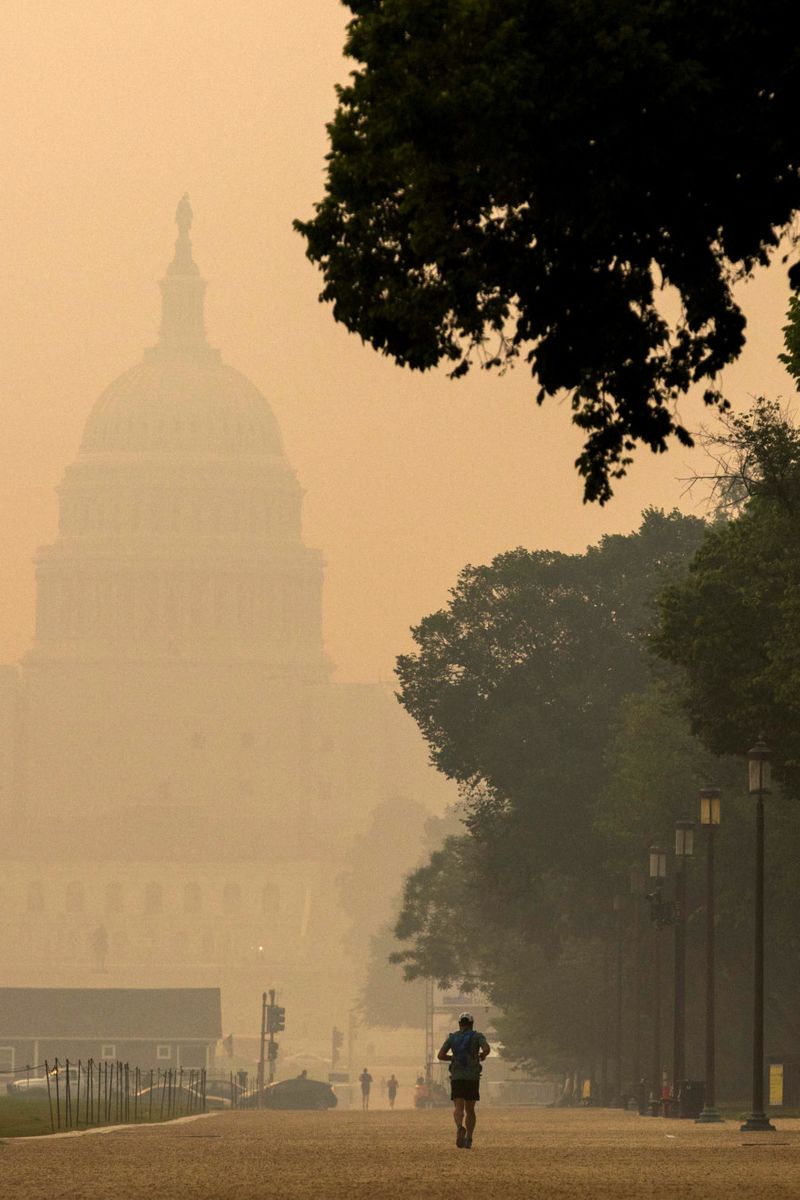
There is an area of low air pressure around Nova Scotia and air is circulating in a big arc to its west.
“That’s the mechanism for bringing down all the smoke,” James said.
Air is moving south in Quebec near the fires and then veering towards the eastern seaboard, carrying smoke into populated sections of the United States.
The good news is that weather patterns change and the worst conditions should only last a day or two. Some smoke, however, could linger for a week or more, according to James.
“I don’t remember fires of this scale in the last 10 years,” he said.
WHAT IS PARTICULATE MATTER AND WHY IS IT DANGEROUS?
Wildfire smoke is hazardous in part because it contains tiny, inhalable particles called PM2.5. The same type of air pollution is emitted when cars burn gasoline or power plants burn coal for fuel, but it’s particularly acute during wildfires.
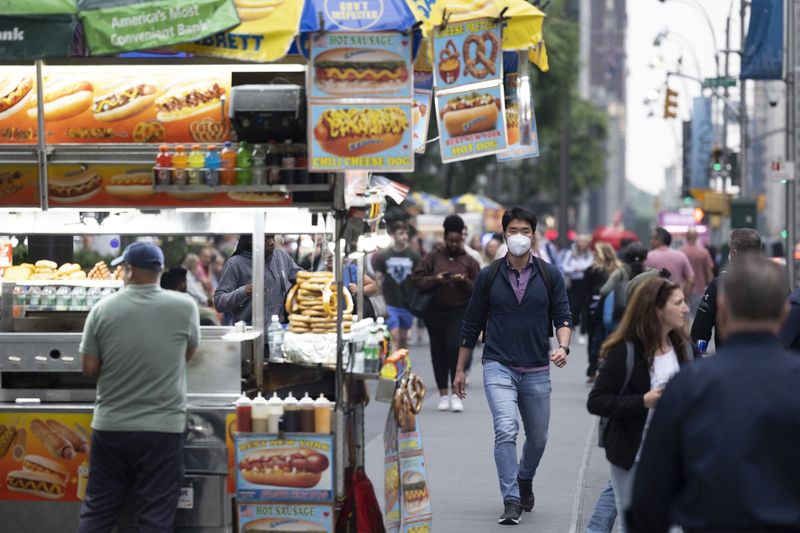
While people with health conditions like asthma and heart disease are at elevated risk, even otherwise healthy people may experience symptoms like coughing, sneezing and eye irritation when exposed to particulate matter. Health experts recommend everyone limit their time outdoors when air quality is seriously bad, like it is in the US Northeast right now, and steer clear of activities like running outdoors until things improve.
WHAT DOES THE AQI NUMBER EVEN MEAN? IS 200 EQUIVALENT TO SMOKING A PACK OF CIGARETTES IN A DAY?
The toxins in cigarettes and wildfire smoke aren’t exactly the same, but comparing them is the best analogy researchers have to communicate the harmful effects of poor air quality, experts say.
An AQI of about 20 is equivalent to smoking one cigarette per day, according to researchers from Stanford University. Communities exposed to wildfire smoke causing an AQI of 150 for several days is equivalent to about seven cigarettes a day, the researchers said, though that’s only if you’re outside the entire time.
Still, being indoors doesn’t provide 100% protection due to leakage. For those looking for an added layer of protection, high-efficiency particulate air filters, or HEPA filters, are good to keep on hand.
HOW LONG WILL THE WILDFIRE SMOKE LAST?
Experts predict the smoke, and the unhealthy air quality, to buffet the Northeast and the Mid-Atlantic for at least a few more days until the winds shift to push it further west.
New York State officials extended an air quality advisory through on Thursday, with Governor Kathy Hochul saying the situation may abate over the weekend. The risk remains that the smoke could subsequently return, Hochul said.
The National Weather Service expects a stalled low pressure system that’s directing the toxic smoke southward to shift it away from the region this weekend, with winds taking it toward the Midwest. As long as the fires continue, however, the smoke may simply be directed toward other areas of the US.










